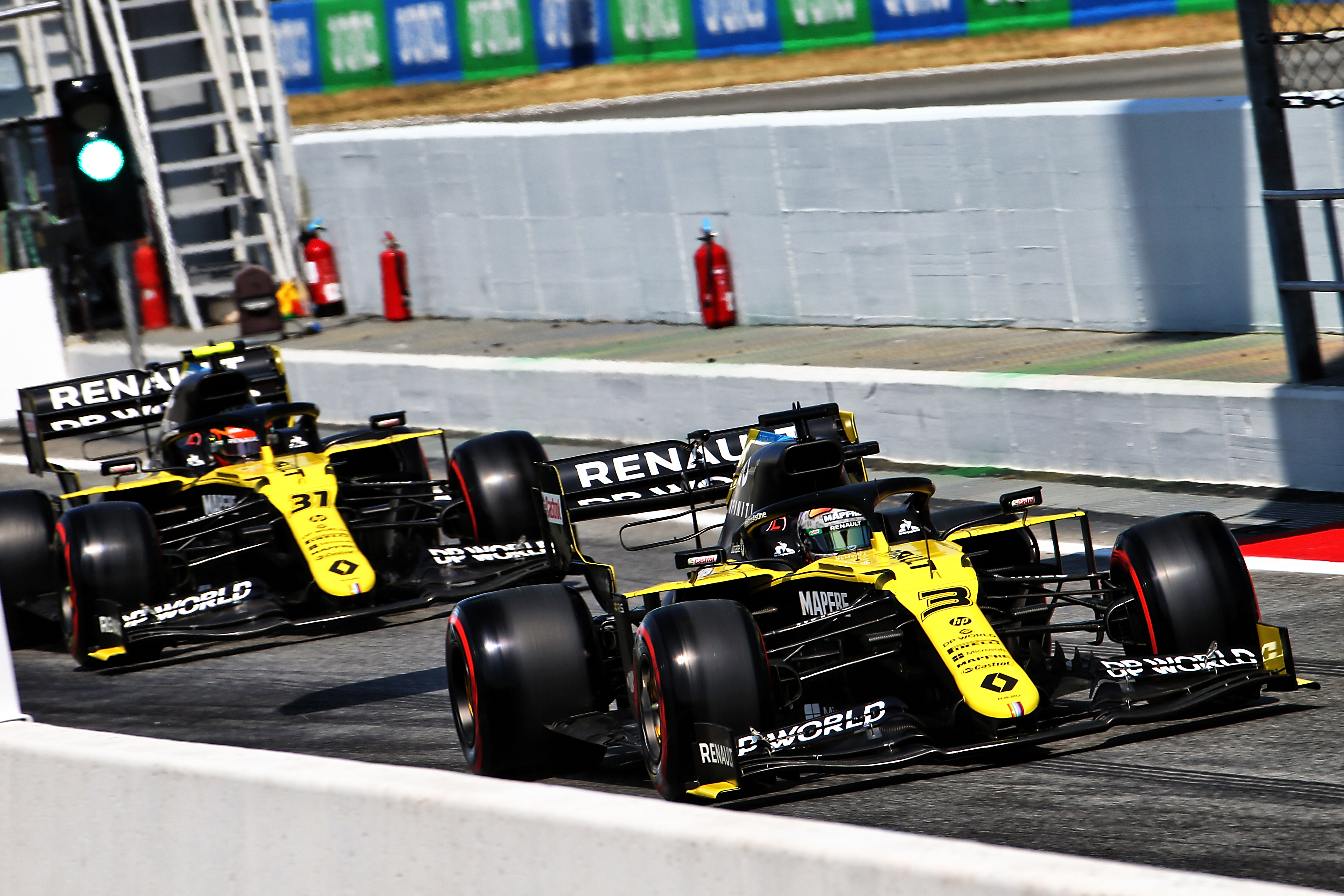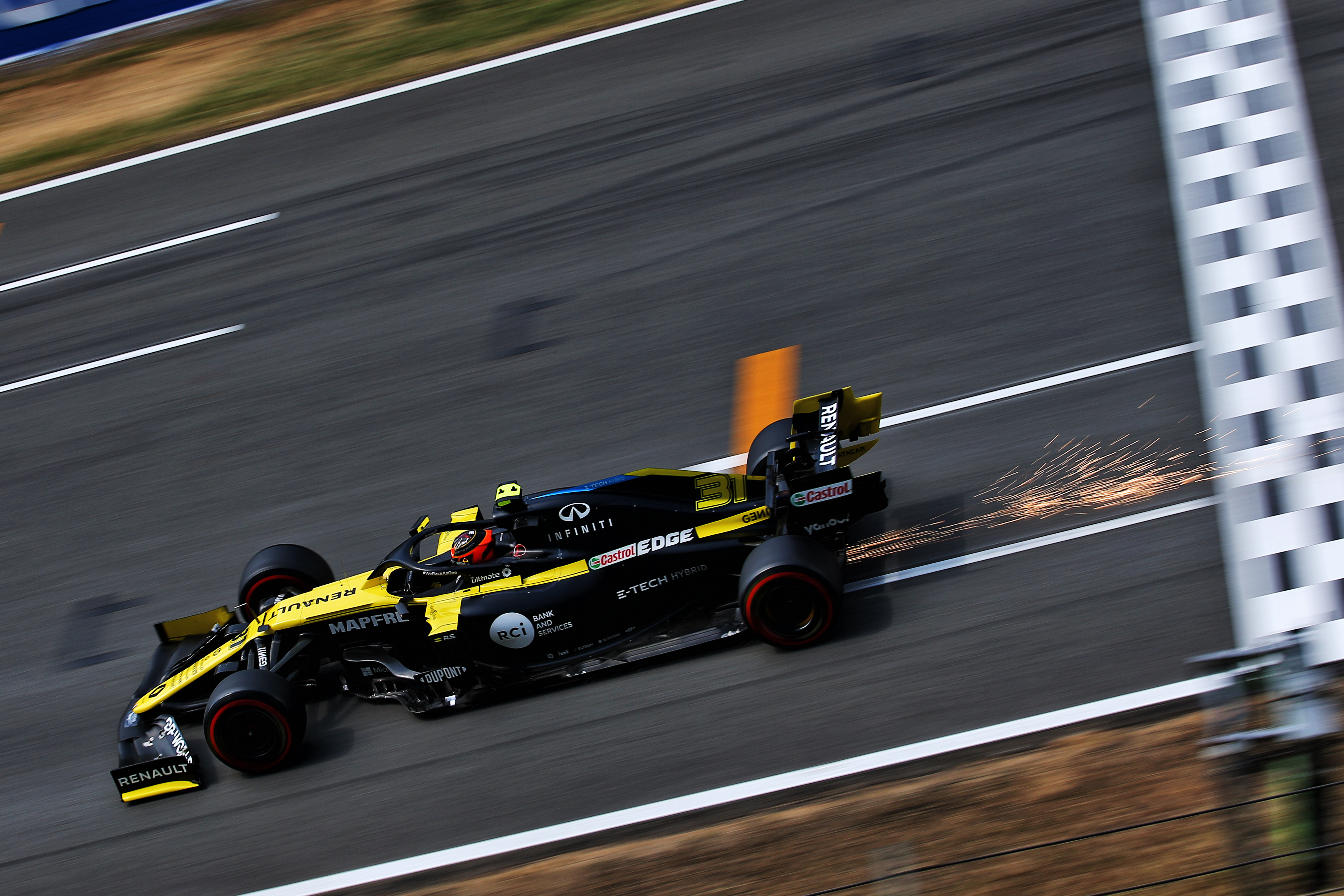Up Next

Esteban Ocon’s Spanish Grand Prix qualifying woe appears to be caused by an escalation of an unknown problem costing him straightline speed and leaving him slower than an Alfa Romeo.
Ocon has qualified 15th at Barcelona, the worst grid position of his first season with Renault with the biggest deficit he has had to team-mate Daniel Ricciardo since the opening weekend, which was an anomalously high margin.
“Clearly there’s a lack of performance on my car at the moment” :: Esteban Ocon
The Frenchman was nearly four tenths slower than Ricciardo and he was even outqualified by Alfa driver Kimi Raikkonen, who has not started a race higher than 16th this season and had to take part in Q2 with medium tyres as he had no softs left.
Ocon admitted he was lacking “a bit of grip, of confidence and pace” to get into Q3 but was well off Ricciardo even though his team-mate also failed to progress to the shootout and will only start 13th.
“We’re still not on top of the differences between the two cars that there is at the moment since Silverstone 2,” said Ocon, whose car was fully repaired ready for qualifying after his practice three crash.
“So, yeah, we need to get on top of that. Clearly there’s a lack of performance on my car at the moment.”
Last weekend at the 70th Anniversary Grand Prix Ocon said Renault was investigating “a couple things we are unsure of”, as despite a strong race he was concerned about the gap that emerged between himself and Ricciardo in qualifying.
Across the first four races of the season Ocon’s qualifying deficit to Ricciardo was just 0.239%, and that reduced to nothing if the anomalous Austrian GP session was discounted.
However, at the 70th Anniversary Grand Prix Ocon was 0.433% adrift of Ricciardo. At Barcelona on Saturday that increased again to 0.478%.

In the last two races Ricciardo has moved onto a second combustion engine, turbocharger, MGU-H and MGU-K, which Ocon said is one potential cause of the deficit because there is now a clear difference on the team’s data.
“Since Silverstone 2 there is a bit of lap time that I’m losing in the straights between the two cars,” said Ocon.
Between the two Silverstone events Ocon switched from being almost identical to Ricciardo to being between 2-4km/h slower
“Obviously, Daniel is on his second engine so we don’t know if that comes from that. But at the moment we are seeing a loss of straightline speed on my car.
“The gap basically has grown since Silverstone 2, which wasn’t the case earlier in the year. Like Budapest, we were very close together [0.095% in Ricciardo’s favour].
“Silverstone 1 we were also very close [0.225%]. So, we should be closer than that basically – both together.”

The discrepancy between the age of the parts means Ocon’s engine components have wracked up 3935km so far this season, while Ricciardo’s have completed a maximum of 1974km since their introduction.
And between the two Silverstone events Ocon switched from being almost identical to Ricciardo through every meaningful speed measuring point in qualifying, to being between 2-4km/h slower.
At Barcelona, Ocon was 2.5km/h down at the speed trap, before the braking zone at Turn 1, and 2.8km/h down across the finish line. He was 5.2km/h slower just before the cars brake for the Turn 10 hairpin.
This was reflected in the lap time, too. Of Ocon’s 0.369s deficit, 0.155s came in the first sector – which comprises the long run to Turn 1 and the flat out blast from the exit of Turn 2 and through Turn 3.
He lost a further 0.136s in the middle sector, but only 0.100s through the slower final third of the lap.
That added up to one of the larger team-mate deficits in Spanish GP qualifying, though Daniil Kvyat, Nicholas Latifi, Alex Albon and Antonio Giovinazzi had bigger gaps to their sister cars.
Ocon may not have to wait too long for a drastic solution, though. After a week’s break, the next F1 triple-header comprises the power-sensitive Spa, Monza and Mugello circuits – for which a fresh engine will surely be fitted.





